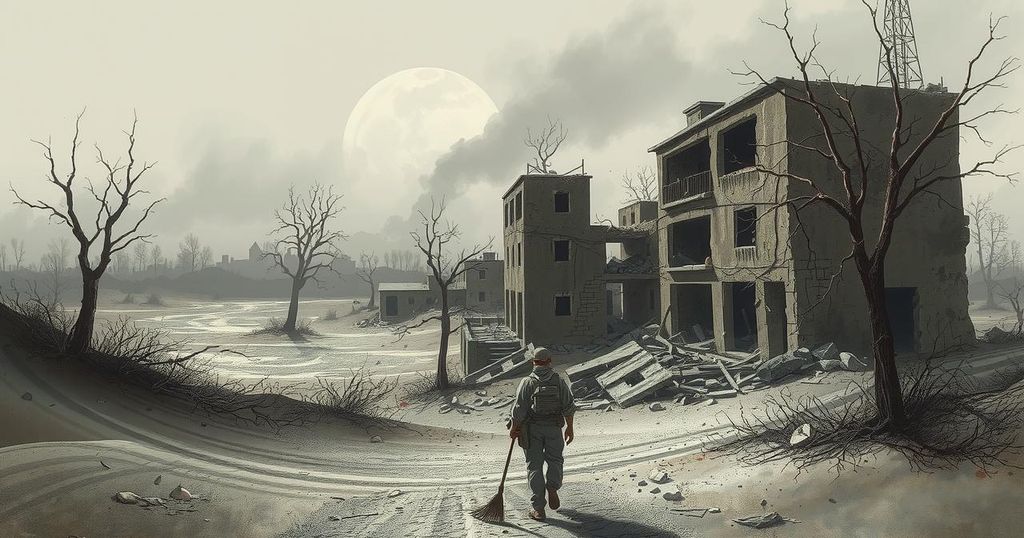The Syrian conflict, now 14 years in duration, has recently seen a dramatic shift in power with Ahmad al-Sharaa assuming leadership after the ousting of President Bashar al-Assad. Amid ongoing violence from Assad loyalists and a significant resurgence of ISIS insurgency, Sharaa’s commitment to peace and effective governance is put to the test. The involvement of foreign powers complicates the situation further, necessitating immediate international attention and action.
The Syrian conflict, which began with nationwide protests fourteen years ago, has evolved into a complex civil war that continues to ensue today. This marks the first anniversary of the conflict without President Bashar al-Assad in power, as he was ousted in a swift offensive just three months prior. Ahmad al-Sharaa, previously known for his ties to ISIS and Al-Qaeda, has assumed leadership in a tumultuous shift of power.
Despite Sharaa’s call for peace and unity, violence remains prevalent in Syria, instigated by the residual impact of Assad’s loyalists who have engaged in violent ambushes against the new interim government’s security forces. Reports indicate significant civilian casualties, particularly among the Alawite community, further fueling sectarian tensions across several provinces. This crisis presents a critical test for Sharaa regarding his commitment to pluralistic governance and stability.
International reactions to the escalating violence have varied. Iran’s influence has dwindled following Assad’s removal, with new resistance groups taking form to challenge the interim government. Conversely, Russia maintains military support in western Syria while pressing both the interim government and foreign powers, including the U.S., to negotiate for peace. Reports suggest that the U.S. holds a mediating role concerning a deal with the Kurdish-led Syrian Democratic Forces (SDF) to integrate their governance into the central framework.
Turkey’s alignment with Sharaa creates additional complexities, as Ankara views the SDF as affiliated with the PKK, a Kurdish separatist movement. This dynamic has led to internal clashes within Syria between Turkey-backed forces and Kurdish fighters. The commitment of the U.S. administration to support the SDF remains uncertain amidst broader geopolitical challenges in the region.
In southern Syria, Israel has focused on protecting the Druze minority amidst the rising influence of the interim government. Military strikes against Assad’s military assets continue, expanding Israel’s operational footprint in the region and further complicating Sharaa’s consolidation of power. Meanwhile, local Druze protests signal discontent with foreign involvement.
Although ISIS has been significantly weakened, the group maintains an insurgent presence and threatens the fragile security situation within Syria. Sharaa, with his previous affiliations, inherits the complexities of countering this insurgency as U.S. strikes against ISIS have increased following Assad’s removal. The resurgence of ISIS represents both a domestic and international challenge for the new leadership in Syria.
In conclusion, the ongoing Syrian conflict, now 14 years since its inception, has seen a radical shift in power dynamics with the ousting of Bashar al-Assad. Ahmad al-Sharaa’s interim leadership faces immense challenges, including ongoing violence from loyalist factions and insurgent threats from ISIS. International interventions from countries such as Iran, Russia, Turkey, and Israel add layers of complexity to an already woven tapestry of conflict, asserting the urgent need for a cohesive approach to achieve lasting peace. The rising sectarian violence and the unstable alliances amongst ethnic groups further underscore the fragile nature of Syria’s future.
Original Source: www.newsweek.com




